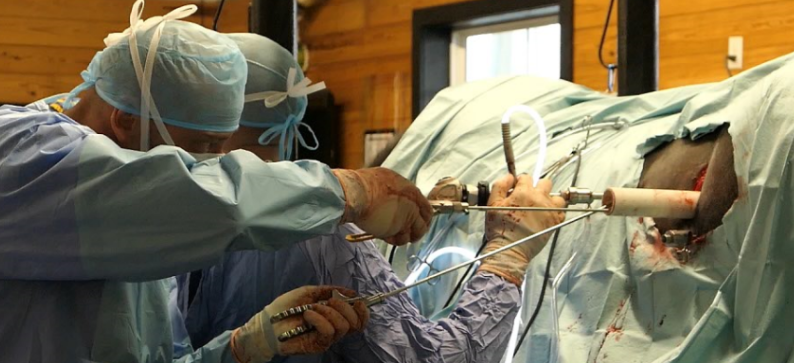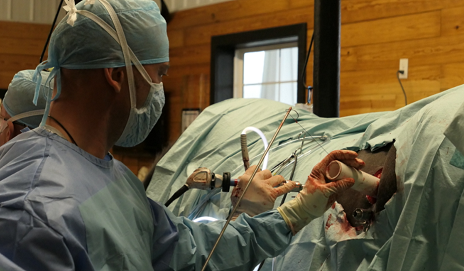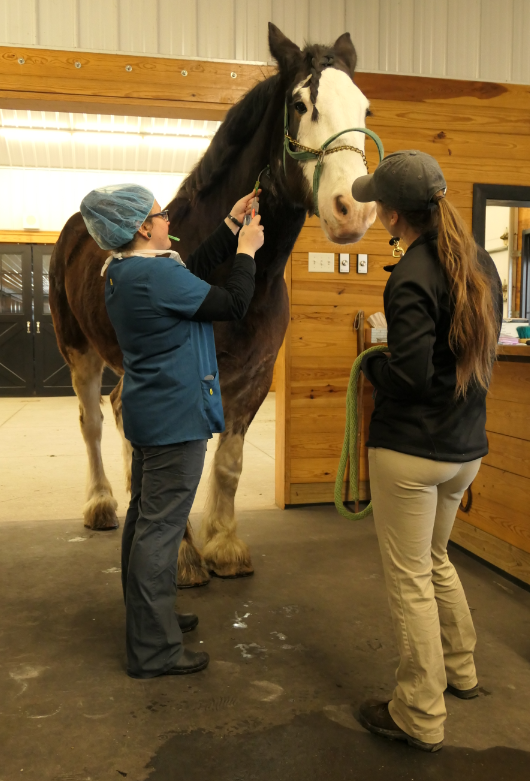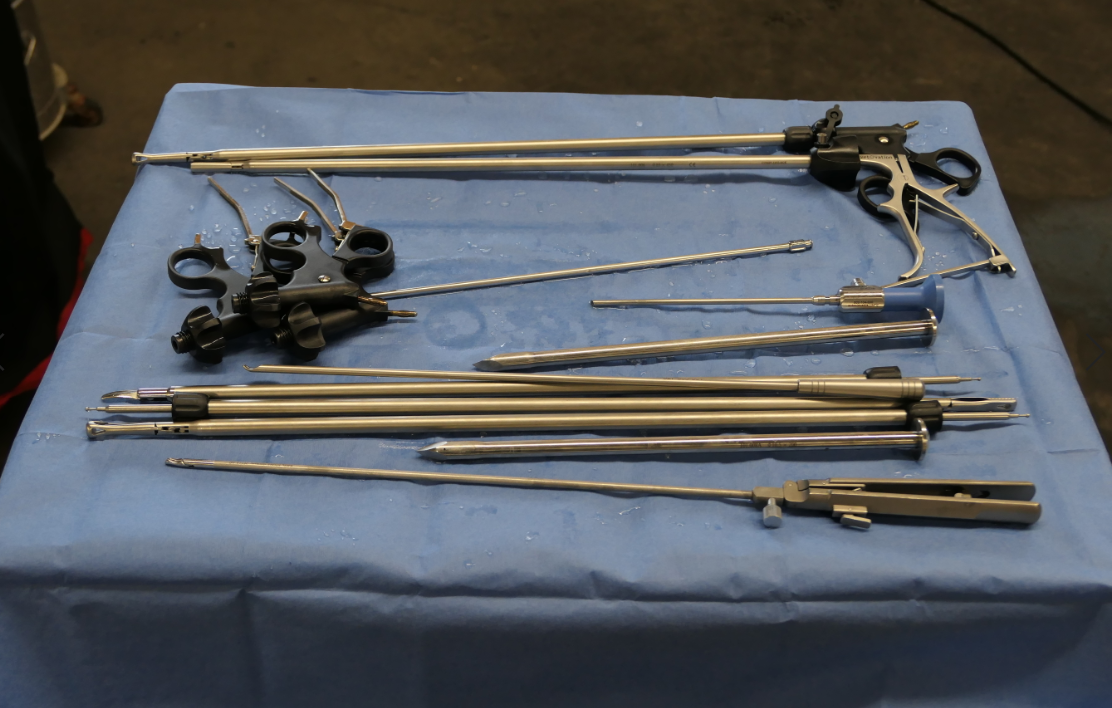What’s your diagnosis?
A 10 year old, Clydesdale gelding presented to a referring veterinarian showing symptoms of inappetence, an increased respiratory rate and mild wheezes in both lungs, but normal gut sounds. He also displayed the flehmen response.
What is your diagnosis and next steps/treatments?

The Saginaw Valley Equine Answer
This horse was referred to SVEC for a colic examination. He was diagnosed with nephrosplenic entrapment. Nephrosplenic entrapment is a type of colic that occurs when the left large colon moves between the body wall and the spleen and then proceeds to get stuck above the nephrosplenic ligament. The nephrosplenic ligament connects the left kidney and the spleen. Phenylephrine was administered to constrict blood vessels causing the the spleen to shrink. This allows the colon to move back in place. He was also trotted for 20 minutes to help the colon dislodge. The next day he appeared bright, drank overnight, and passed manure. Ultrasound revealed the nephrosplenic entrapment had resolved and he was released from the hospital.
Five days later he was hospitalized again for colic. An ultrasound was performed revealing nephrosplenic entrapment and he was given phenylephrine. Due to the reoccurring entrapment it was determined that he would be a good candidate for nephrosplenic space ablation. This surgery can be done standing under local anesthesia. An incision is made in the left flank and then the space between the kidney and spleen is closed laparoscopically using barbed intra-abdominal sutures. Closing this space keeps the colon from getting trapped again.
The direct cause of nephrosplenic entrapment is unknown. The suspected cause is an accumulation of gas in the large colon that causes it to move and become entrapped over the nephrosplenic ligament.

Suturing the Nephrosplenic Space





